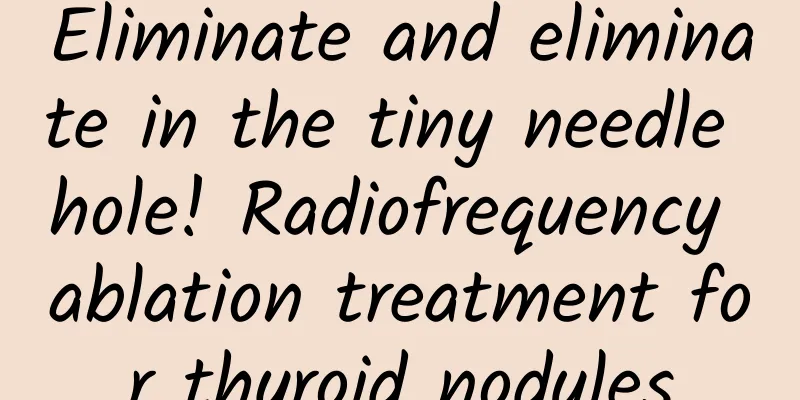The sequential treatment of cleft lip and palate includes four aspects! When is the best time to have surgery?

|
Author: Ma Lian, chief physician at Peking University Stomatological Hospital Reviewer: Wang Lixiang, Chief Physician, Third Medical Center, PLA General Hospital The 10th Chairman of the Science Popularization Branch of the Chinese Medical Association Many people think that cleft lip and palate surgery is a permanent solution, but this is not the case. The treatment of cleft lip and palate is a sequential treatment process from birth to adolescence, until growth and development are basically completed. 1. Cleft lip and palate sequential treatment includes four aspects Generally speaking, the sequential treatment of cleft lip and palate includes four aspects. In summary, one is basic surgery, two is auxiliary surgery, three is evaluation, and four is auxiliary treatment. Figure 1 Original copyright image, no permission to reprint Basic surgeries include cleft lip, cleft palate repair surgery, and alveolar bone repair surgery. Auxiliary surgeries include repair surgery for secondary nasal and lip deformities, pharyngoplasty, palatal fistula repair, middle ear tube placement, and maxillary orthognathic surgery. Secondary nasal and lip deformities, velopharyngeal incomplete closure, maxillary dysplasia, palatal fistula after cleft palate surgery, and middle ear problems do not occur in all children with cleft lip and palate. If any of the above conditions exist, surgical repair is required. Once the basic surgery is done, that is, cleft lip, cleft palate, and alveolar ridge bone grafting, auxiliary surgery is generally not necessary. Evaluation is also an element of sequential treatment, such as the evaluation of the child's growth and development, pronunciation, intelligence, and middle ear function. In sequential treatment, some parents often ignore the evaluation, do not follow up on time, and think that the surgery is enough, and sometimes miss a good opportunity for auxiliary surgery. There are follow-up points after the basic cleft lip and palate surgery. A follow-up must be performed before school age to check the growth and development, language, and voice recovery; generally, a follow-up is required at the age of nine to ten, and this age is the time point for alveolar bone repair, which is also very important; a follow-up is required at the age of thirteen or fourteen, and this age group is the time point for repairing nasal deformities; a follow-up is required at the age of sixteen or seventeen, and maxillary surgery is generally performed at the age of sixteen or seventeen. Auxiliary treatment is non-surgical treatment, such as speech training. Some children need to start speech training during the follow-up at the age of two and a half. If a child with cleft palate undergoes surgery at the age of eight months, 80% of them do not need speech training intervention, because the deformity has been repaired before the child's speech development, which generally does not affect speech development. Auxiliary treatment also includes psychological counseling, psychotherapy, and orthodontic treatment. Every child with cleft lip and palate generally needs orthodontic treatment. Of course, it is up to the parents to choose whether to do it. 2. When is the best time for children with cleft lip and palate to undergo surgery? Basic surgery, cleft lip surgery is generally the sooner the better, there is a standard, to meet three tens, that is, age reaches ten weeks, weight reaches ten kilograms, hemoglobin reaches ten grams per deciliter, of course, the standard is not absolute, but relative, the specific needs of the doctor to evaluate. Generally speaking, cleft lip surgery can be performed when the child is three months old. It is generally recommended that cleft palate surgery be performed when the child is about eight months old. This is related to two important factors: pronunciation and growth and development. For pronunciation, the earlier the better; for growth and development, the later the better. The formal development of a child's speech is at around eight months old, and formal pronunciation requires a normal oral anatomical structure. Of course, it is also related to the degree of cleft palate and the child's physique. Generally speaking, incomplete cleft palate surgery is performed at around eight months old, and some can be performed earlier; complete cleft palate surgery is generally performed at around ten months old; bilateral complete cleft palate surgery is generally performed at around one year old. Of course, there are some special cases, and the physical condition of the child should be the main consideration. Cleft lip and palate surgery is an elective surgery, and life is the first priority. Life should not be put in danger in pursuit of early surgery. Alveolar ridge bone grafting surgery is usually performed between the ages of nine and eleven. After cleft lip and cleft palate are repaired, the gums appear to be continuous on the surface, but in fact the bones are missing. The loss of alveolar bone will cause the nose floor to collapse. If you want to do orthognathic surgery and maxillary traction, the maxillary bone must be continuous; if you want to do orthodontic surgery after the teeth grow out, the teeth cannot be moved without alveolar bone. Based on these points, surgery between the ages of nine and eleven is also a relatively common age internationally, which can lay the foundation for future orthodontic and orthognathic surgery and serve as a bridge. It does not mean that it cannot be done before the age of nine or after the age of eleven, but that doing it at this stage between the ages of nine and eleven can get the greatest benefit and the best results. Figure 2 Original copyright image, no permission to reprint When is the best time to perform auxiliary surgery? Some people perform rhinoplasty at the same time as cleft lip surgery. In fact, after cleft lip surgery, the nose will improve by 80%, because the nose will grow. It is generally recommended to perform rhinoplasty after the age of 13. Secondary deformities of the lip, especially severe deformities, may cause psychological problems in children, so surgery should be performed in time before elementary school. As long as there is an incision in cleft lip and palate surgery, scars will definitely be left, but the severity is a matter of degree, and some are not very obvious. Scars are secondary to deformities, and doctors will try to avoid excessive scars every time they perform surgery. Infection is the biggest factor causing scars, so postoperative care is very important. |
<<: The mitral valve is quietly leaking, can your heart still withstand it?
>>: Why does mitral stenosis prefer "her"? What are the symptoms?
Recommend
What are the benefits of having an IUD inserted to your body?
When having sex, many people don't like to we...
What are the symptoms of HPV in women
HPV, the human immunodeficiency virus. In recent ...
What happens in the eighth week of pregnancy?
The happiest thing for women is to be a mother. T...
Website-Monitoring: Google+ Facts and Figures – Data Information View
Google+ gives the impression that its users are a...
The specific reason why women have pain on the left side of their lower abdomen
There are many reasons for abdominal pain. Some w...
What should I do if my 16-year-old breasts are underdeveloped?
After puberty, as women's menstruation gradua...
How to make hot pot base? Is the hot pot sauce pure sesame oil?
Eating hot pot gives people a warm and team-like ...
What causes cervical erosion?
Many women often experience this phenomenon in th...
What should I do if my genitals are itchy and have tofu residue?
The vulva is a female reproductive organ located ...
Is the stringy leucorrhea the ovulation period?
Does stringy leucorrhea indicate ovulation? Many ...
Can I get pregnant with a breast cyst?
Breast cysts are a relatively common gynecologica...
How many months does it take to do a four-dimensional color ultrasound?
Many people know that they need to be checked dur...
How to treat gynecological inflammation by yourself?
Women are very likely to get gynecological infect...
What changes will happen to your body if you climb stairs for 5 minutes every day? Many people would never expect
“Too busy at work” 'No venue' “Gym is too...
What bird is similar to the ostrich? What does the ostrich eat in winter?
The ostrich is a vertebrate and the largest bird ...









